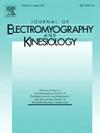Transcranial magnetic stimulation and electrical stimulation techniques used to measure the excitability of distinct neuronal populations that influence motor output in people with persistent musculoskeletal conditions: A scoping review and narrative synthesis of evidence
IF 2
4区 医学
Q3 NEUROSCIENCES
引用次数: 0
Abstract
Functional impairments are evident in persistent musculoskeletal (MSK) conditions, and linked to altered excitability of neuronal elements contributing to motor output. In MSK conditions, transcranial magnetic stimulation (TMS) or electrical stimulation (ES) techniques have been used to investigate intracortical, corticospinal, spinal and neuromuscular excitability, which influence the efficacy of descending volley transmission to produce movement. This review compiled studies using TMS or ES to investigate neuronal excitability in persistent MSK conditions, to identify techniques used, and to synthesis evidence for neural deficits. We used narrative synthesis to summarise individual study findings. We included 60 studies; 52/60 used at least one TMS technique, and more frequently measured corticospinal tract excitability (48/52). 15/60 studies used at least one ES technique, and more frequently measured neuromuscular excitability (15/15). In tendinopathy, excitability was assessed for a range of distinct neurones; no study measured neuromuscular excitability in low back pain, osteoarthritis or shoulder pain, nor spinal or intracortical excitability in shoulder pain. This review identified a range of TMS and ES techniques used to assess excitability of neural elements. It provides insight for specific deficits contributing to functional impairments in certain persistent MSK conditions, while highlighting evidence gaps hindering the ability to draw meaningful inferences.
经颅磁刺激和电刺激技术用于测量影响持续性肌肉骨骼疾病患者运动输出的不同神经元群的兴奋性:范围回顾和证据的叙述综合
功能性损伤在持续性肌肉骨骼(MSK)疾病中是明显的,并且与影响运动输出的神经元元素的兴奋性改变有关。在MSK条件下,经颅磁刺激(TMS)或电刺激(ES)技术被用于研究皮质内、皮质脊髓、脊髓和神经肌肉的兴奋性,它们影响下行截击传递产生运动的效果。本综述汇编了使用TMS或ES研究持续性MSK条件下神经元兴奋性的研究,以确定所使用的技术,并合成神经缺陷的证据。我们使用叙事综合来总结个别研究结果。我们纳入了60项研究;52/60至少使用一种经颅磁刺激技术,更频繁地测量皮质脊髓束兴奋性(48/52)。15/60的研究至少使用了一种ES技术,并且更频繁地测量神经肌肉兴奋性(15/15)。在肌腱病变中,对一系列不同神经元的兴奋性进行评估;没有研究测量腰痛、骨关节炎或肩痛患者的神经肌肉兴奋性,也没有研究测量肩痛患者的脊柱或皮质内兴奋性。本综述确定了一系列用于评估神经元件兴奋性的TMS和ES技术。它提供了对某些持续性MSK条件下导致功能损伤的特定缺陷的见解,同时强调了阻碍得出有意义推论能力的证据差距。
本文章由计算机程序翻译,如有差异,请以英文原文为准。
求助全文
约1分钟内获得全文
求助全文
来源期刊
CiteScore
4.70
自引率
8.00%
发文量
70
审稿时长
74 days
期刊介绍:
Journal of Electromyography & Kinesiology is the primary source for outstanding original articles on the study of human movement from muscle contraction via its motor units and sensory system to integrated motion through mechanical and electrical detection techniques.
As the official publication of the International Society of Electrophysiology and Kinesiology, the journal is dedicated to publishing the best work in all areas of electromyography and kinesiology, including: control of movement, muscle fatigue, muscle and nerve properties, joint biomechanics and electrical stimulation. Applications in rehabilitation, sports & exercise, motion analysis, ergonomics, alternative & complimentary medicine, measures of human performance and technical articles on electromyographic signal processing are welcome.

 求助内容:
求助内容: 应助结果提醒方式:
应助结果提醒方式:


